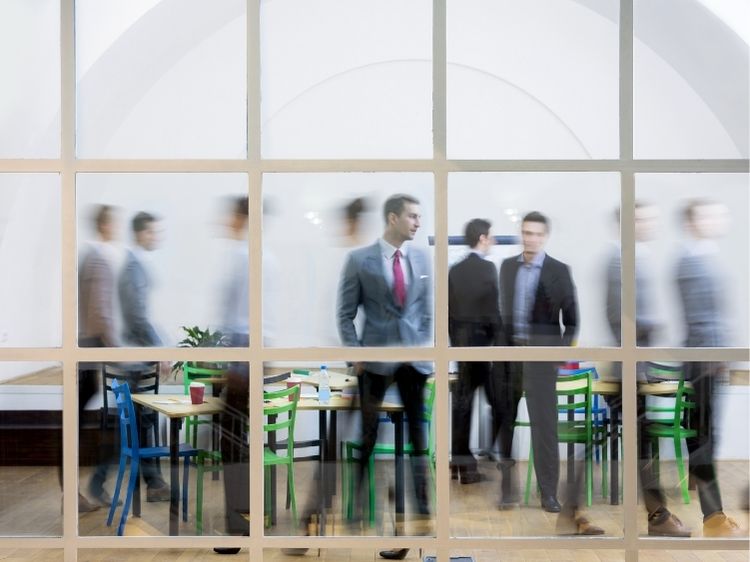Cracking the Code of Business Casual
“What is business casual?”—a question that’s stumped employees for decades. It’s the Goldilocks of dress codes: not too formal, not too relaxed, but just right. Business casual is a hybrid dress code blending professional attire with a touch of personal comfort and style. But figuring out what fits the bill can feel like solving a fashion puzzle.
In this guide, we’ll break it all down, from its origins to specific outfit ideas, ensuring you leave with a clear understanding (and a wardrobe ready to impress).
What Is Business Casual?
At its core, business casual is a workplace dress code that encourages a polished but less rigid appearance. It bridges the gap between traditional business formal wear and casual weekend attire. Think tailored pants over jeans or button-up shirts over graphic tees.
Key Features of Business Casual Attire:
- Neat and Professional: No wrinkles, stains, or overly bold patterns.
- Comfortable but Presentable: You should feel at ease while maintaining professionalism.
- Flexible Standards: What’s considered business casual varies across industries, companies, and regions.
A Brief History of Business Casual
Believe it or not, the rise of business casual started in Hawaii! During the 1960s, “Aloha Fridays” encouraged employees to wear Hawaiian shirts instead of formal suits. The trend spread to mainland offices in the U.S., evolving into the business casual style we recognize today.
By the 1990s, tech companies like Apple and Google popularized this dress code, emphasizing creativity over conformity. Today, business casual reflects a blend of professionalism and individuality.
What Does Business Casual Look Like for Men and Women?
Men’s Business Casual Essentials
- Shirts:
- Button-up or button-down shirts in solid colors or subtle patterns.
- Polo shirts for a laid-back but polished look.
- Pants:
- Chinos, dress pants, or slacks.
- Dark jeans may work in more relaxed offices, but avoid rips or distressing.
- Shoes:
- Leather loafers, oxfords, or brogues.
- Avoid sneakers unless explicitly allowed.
- Extras:
- Sweaters, blazers, or vests for layering.
- A belt matching your shoes.
Women’s Business Casual Staples
- Tops:
- Blouses, button-ups, or neatly fitted knit tops.
- Sleeveless tops can work if paired with a blazer.
- Bottoms:
- Tailored trousers, pencil skirts, or A-line skirts.
- Dark or neutral-colored ankle pants.
- Shoes:
- Flats, loafers, or low-to-mid heels.
- Closed-toe shoes are the safer choice.
- Accessories:
- Simple jewelry and structured handbags.
Dos and Don’ts of Business Casual
Dos:
- Do prioritize fit: Baggy or overly tight clothing is a no-go.
- Do keep it neutral: Stick to solid colors or subtle patterns.
- Do invest in quality fabrics: Durable, well-made pieces leave a great impression.
Don’ts:
- Don’t overdo accessories: Less is more when it comes to workplace style.
- Don’t wear athletic wear: Leggings, hoodies, and sneakers scream casual, not business casual.
- Don’t skip grooming: Polished shoes and neat hair elevate any outfit.
Business Casual Outfit Ideas
For Men:
- Navy chinos + light blue button-down shirt + brown loafers.
- Charcoal slacks + white polo shirt + black leather belt.
For Women:
- Black ankle pants + patterned blouse + nude flats.
- A-line skirt + fitted sweater + ballet flats.
FAQs: Answering the Burning Questions
1. Can jeans be considered business casual?
Yes, but only in some workplaces. Opt for dark, clean, and non-distressed jeans to stay within the guidelines.
2. Are sneakers business casual?
Typically, no. However, clean, minimalist sneakers might be acceptable in creative or tech environments.
3. How does business casual differ from smart casual?
Business casual leans more professional, while smart casual incorporates trendy or casual elements, such as stylish sneakers or bold accessories.
4. Can I wear a T-shirt in a business casual setting?
Unless layered under a blazer or sweater, T-shirts are generally too casual for business casual standards.
5. What should I avoid in business casual attire?
Avoid shorts, flip-flops, overly bold patterns, and any outfit you’d wear to a party or the gym.
Business Casual Across Industries
The interpretation of business casual varies widely. Here’s a quick breakdown by sector:
- Corporate Offices: Lean toward tailored pants, blazers, and closed-toe shoes.
- Tech Startups: Chinos or dark jeans with polos or button-ups often suffice.
- Creative Agencies: Slightly relaxed standards, allowing trendy or stylish elements.
- Retail or Customer Service: Uniforms might dictate the dress code, but when business casual applies, aim for neat and polished.
Building a Business Casual Wardrobe on a Budget
Here are a few tips to build a versatile, affordable wardrobe:
- Thrift Stores: Look for quality blazers, trousers, and accessories at lower prices.
- Capsule Wardrobe: Invest in neutral, mix-and-match pieces.
- Online Deals: Watch for discounts on essential brands like Banana Republic, J.Crew, or Uniqlo.
- Quality Over Quantity: A few well-made staples go further than a closet full of ill-fitting clothes.
Summary: Dress to Impress Without Stress
So, what is business casual? It’s a professional yet relaxed approach to workplace attire that allows for comfort and personality. Whether you’re navigating a new job or refining your style, understanding the nuances of business casual ensures you’ll never feel under or overdressed.



